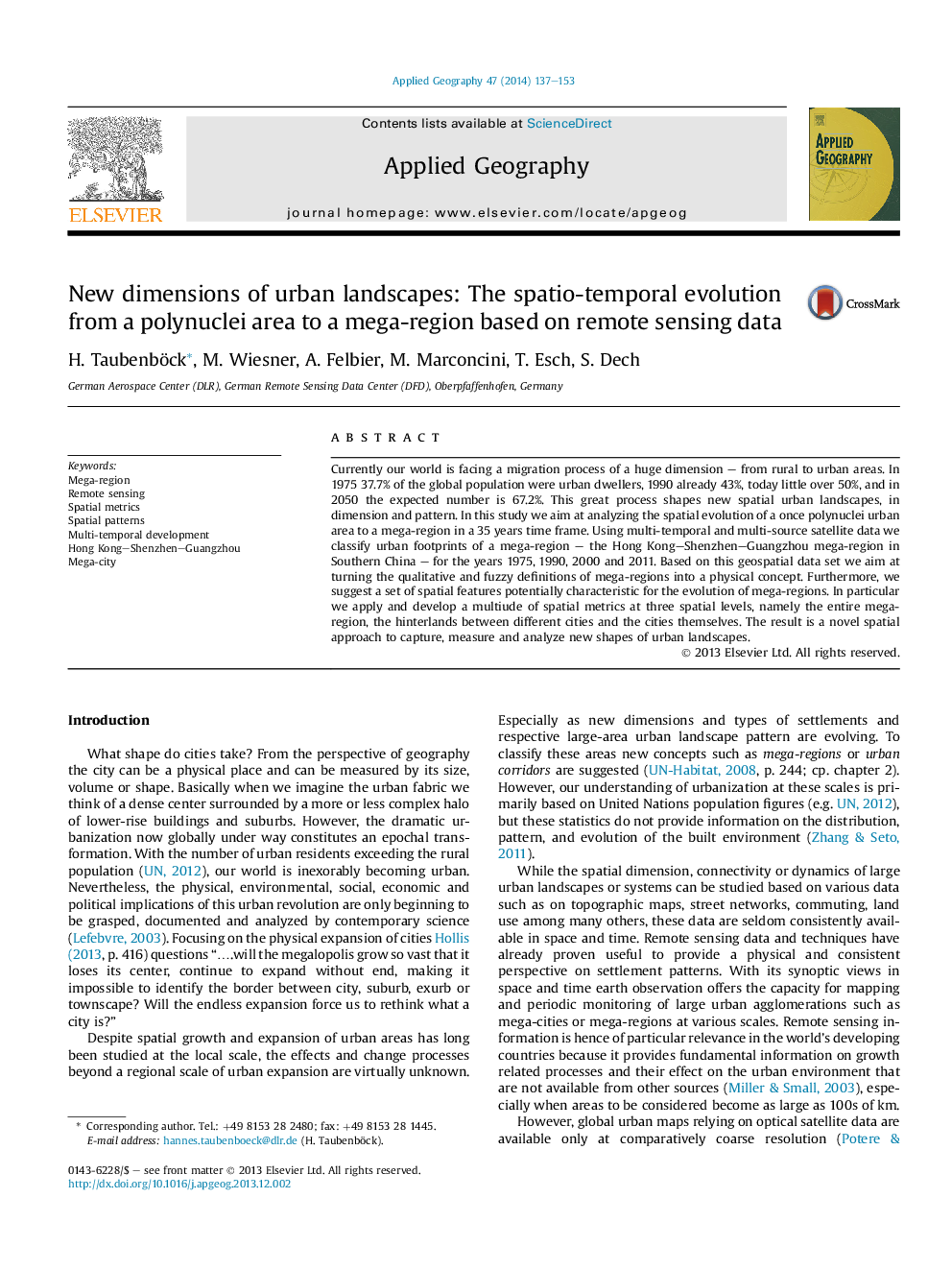| Article ID | Journal | Published Year | Pages | File Type |
|---|---|---|---|---|
| 83336 | Applied Geography | 2014 | 17 Pages |
•Turning the qualitative descriptions of the mega-region concept into a spatial one.•EO-based large area and long-time multi-temporal classifications of urban patterns.•Spatial metrics for measuring spatial patterns at three spatially different levels.•Characterization of the evolution of a mega-region pattern by spatial features.•Proofing the mega-region Hong Kong–Shenzhen–Guangzhou outdraws growth in mega-cities.
Currently our world is facing a migration process of a huge dimension – from rural to urban areas. In 1975 37.7% of the global population were urban dwellers, 1990 already 43%, today little over 50%, and in 2050 the expected number is 67.2%. This great process shapes new spatial urban landscapes, in dimension and pattern. In this study we aim at analyzing the spatial evolution of a once polynuclei urban area to a mega-region in a 35 years time frame. Using multi-temporal and multi-source satellite data we classify urban footprints of a mega-region – the Hong Kong–Shenzhen–Guangzhou mega-region in Southern China – for the years 1975, 1990, 2000 and 2011. Based on this geospatial data set we aim at turning the qualitative and fuzzy definitions of mega-regions into a physical concept. Furthermore, we suggest a set of spatial features potentially characteristic for the evolution of mega-regions. In particular we apply and develop a multiude of spatial metrics at three spatial levels, namely the entire mega-region, the hinterlands between different cities and the cities themselves. The result is a novel spatial approach to capture, measure and analyze new shapes of urban landscapes.
